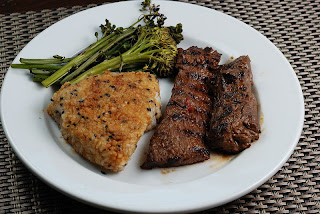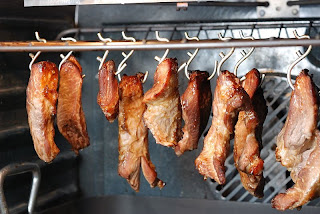We had a pretty "meaty"week because of my recipe testing. And this was the second week I was able to find fava beans at the Davis Farmers Market. So I did a Fava Bean and Asparagus Risotto loosely based on a recipe in Alice Water's Chez Panisse Vegetables
Fava Bean And Asparagus Risotto
3 pounds fava beans
olive oil
salt and pepper
6 stalks asparagus
1 yellow onion
7 to 8 cups chicken stock
4 1/2 tablespoons butter
2 cups Arborio rice
1/2 cup dry white wine
1/2 cup grated parmesan cheese, plus extra for the table
pan fried pancetta slices (optional)
Shell the fava beans, then blanch them in boiling water for 30 seconds. Drain, then cool them in a bowl of ice water to stop the cooking. Peel the beans then add them to a skillet with a splash of olive oil, salt and pepper and water to cover. Bring to a boil then simmer over low heat for about 15 minutes until tender. If you have a food mill, drain them but reserve the liquid. Pass them through the food mill and add the reserved liquid. If you don't have a food mill, set the beans aside in their cooking liquid.
Thinly slice the asparagus on the diagonal. Dice the onion.
Heat the stock and keep at a slow simmer.
In a heavy-bottomed saucepan (I like All-Clad's 5-1/2 Quart Saucier









